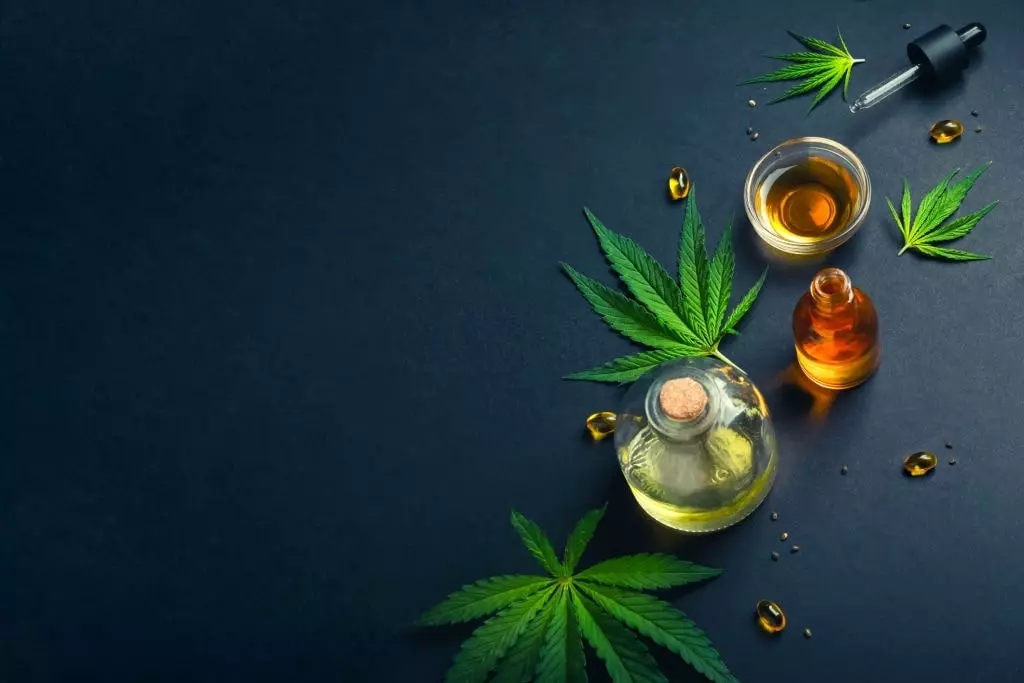Cannabidiol (CBD), a non-psychoactive compound of cannabis, has gained substantial attention among scientists and the public in recent years. While it doesn’t get you high like THC — which is also found in the cannabis plant — it has been touted for potential therapeutic effects when treating various ailments. These include sleeplessness, pain, inflammation, stress and acne among others.
Consumer products containing CBD — such as oils, capsules, gummies and more — are growing in popularity. This may be because more individuals are seeking natural alternatives to harsh pharmaceuticals. However, before you introduce CBD into your arsenal of daily wellness products, it’s important to understand how the compound works within our bodies. Read on to find out how the body processes CBD and the potential benefits it can offer.
What Is CBD?
CBD is one of over 100 compounds found in cannabis — a plant that has been used medicinally for thousands of years. CBD can be ingested orally, topically, via injection or nasal spray. Oral consumption is typically the most popular method. However, some forms are more bioavailable than others.
The Endocannabinoid System
The endocannabinoid system (ECS) was discovered in the 1990s. It is a series of cannabinoid receptors that are found virtually in all tissues of vertebrates, including mammals, reptiles, birds and fish. Experts are still studying the ECS, although it’s been linked to many bodily processes, including appetite, mood, sleep, immune function and inflammation among others. The primary purpose of the ECS is to ensure the body maintains homeostasis. It is a complex cell-signaling system that essentially acts as a bridge between the mind and body.
The ECS is comprised of three components: endocannabinoids, cannabinoid receptors and enzymes. These parts still function and exist regardless of whether a person ingests CBD or not. Endocannabinoids are molecules produced by the body and help regulate various internal functions. The body produces them as needed.
Cannabinoid receptors are responsible for many bodily tasks. They are found throughout the body, from immune cells and blood vessels to fat tissue and the gastrointestinal tract. The two types of cannabinoid receptors are CB1 and CB2, which are found in the central and peripheral nervous systems. Endocannabinoids bind to receptors, and enzymes break them down once they’ve completed their function.
CBD and the ECS
Unlike THC, CBD doesn’t directly trigger the CB1 or CB2 receptors. Instead, researchers believe CBD modifies the receptors’ ability to bind with other cannabinoids. Essentially, it may prevent endocannabinoids from being broken down quickly. This allows them to maximize the effect of other cannabinoids in the body. Some experts believe that CBD binds to receptors that remain undiscovered. However, more research is needed to determine how CBD precisely affects the ECS.
Health Benefits of CBD
CBD has shown promising results in treating a wide range of symptoms and health conditions. Many people use the organic substance for pain management. CBD has been shown to reduce pain responses by inhibiting the absorption of endocannabinoid anandamide.
It also has anti-inflammatory properties and may help with conditions such as arthritis and acne. The compound can also be used to treat sleeplessness, anxiety and depression. This is because it has the ability to act on the brain’s receptors for serotonin, which is a neurotransmitter that regulates mood and social behavior.
If you’re thinking about taking CBD, it’s important to note that the substance may interact with medications or immunosuppressants. For this reason, you should talk with your physician before taking any form of it. Scientists are still studying the possible benefits and full medicinal potential of this trending ingredient. For more information on how the body metabolizes CBD, see the accompanying resource.
Author bio: Michael Barnes is the founder and CEO of 420DC, a cannabis marketing platform in Washington, D.C. He has 15-plus years of experience in marketing as well as the cannabis industry.
This infographic was created by 420DC where you can learn about Virginia medical marijuana laws







